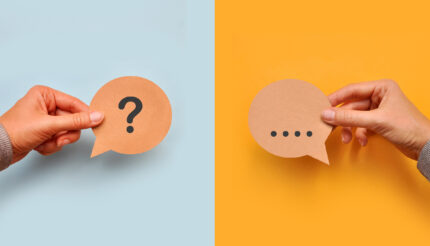Winning new customers is always harder and more expensive than selling to existing customers. There are many ways in which you can keep customers and sell to them time and time again. But there are also things you can inadvertently do that drive your customers away. Could you be driving customers away without realising it?
My wife and I once visited an old favourite historic site and went for lunch at the restaurant. The staff appeared to ignore us as we entered. We waited ten minutes for them to take our order and at one minute past three in the afternoon, they told us that there was no hot food now because they stop serving at 3pm. We never saw one of them smile. They clearly weren’t happy to be there, and so we didn’t enjoy being there either. When we left we agreed that it would be a long time before we returned.
The way that you and your team act toward customers is hugely influential on your long-term profitability. Imagine a customer spends £50 in an interaction and that they buy three times per year, so a customer is worth £150 per year. If your team were so welcoming and friendly and helpful that they came back one extra time per year, you increase revenue 33%! And if you train your team to ask the right questions and identify something extra that the customer wants to buy, you could increase it even further.
Often when I work with a business owner to increase their average sale value or the average number of transactions they are resistant. Although they would like extra profit, they hate the idea of pushy selling and trying to squeeze extra sales out of their customers. So I take them to buy a sandwich for lunch and then review the experience so that they can reverse roles and be reminded of how it is to be a customer.
I recently went to the excellent sandwich shop with clients. When I say ‘excellent’ I mean from the point of view of food quality and choice, but I suspect their profitability is less excellent! Four of us queued to order our sandwiches that were made exactly to order. At no stage did anyone recommend any extra fillings, a different bread roll, nor did they smile and have a laugh. Sure, they were busy, it was lunchtime. At the checkout, we were told the price. Then someone remembered maybe we should buy some cold drinks. We hurriedly decided what we wanted with no suggestions from them. As we left I realised they had a large coffee machine but never mentioned the possibility of us having one.
When we’re on the receiving end it’s easy to see the difference between good service versus bad service or excellent service. But when we’re dealing with customers it’s very easy to forget all the basics. Don’t look at it as extracting more money, think of it as helping customers to buy what they might not realise they want. Smile, compliment them, make suggestions of what they might like. Set a goal that every customer walks away smiling. They will come back more often, and not only will they spend more money, more often, but they’ll be happy to do so. And they’ll recommend other customers to you as well.
Rob Pickering,
Senior Partner & Business Coach





